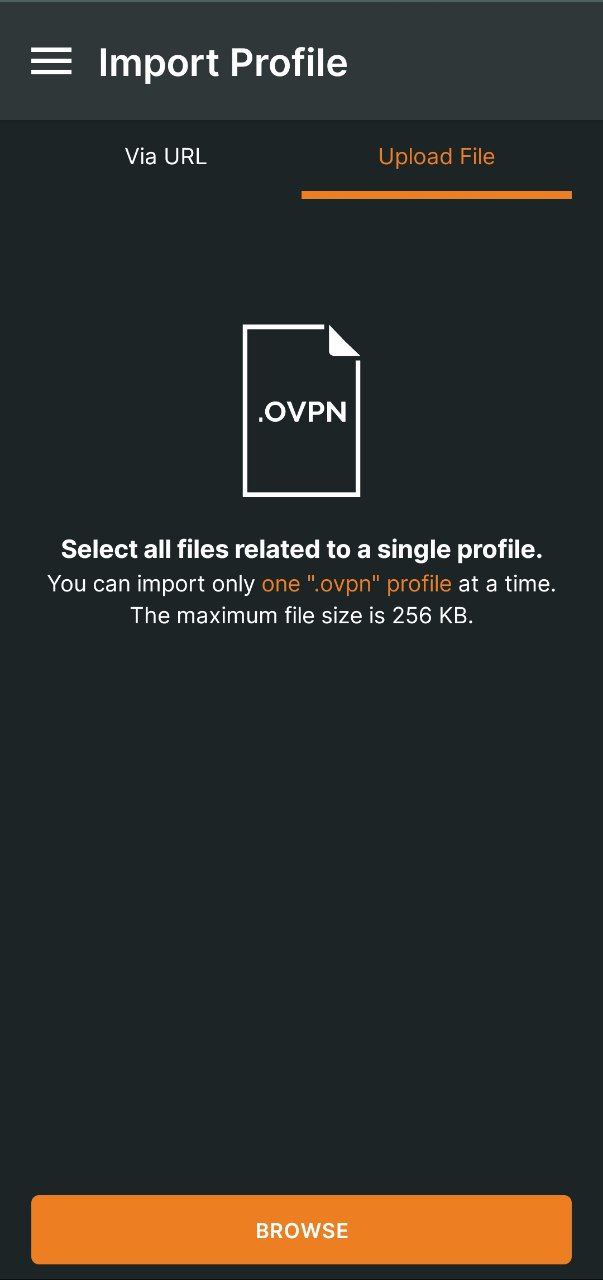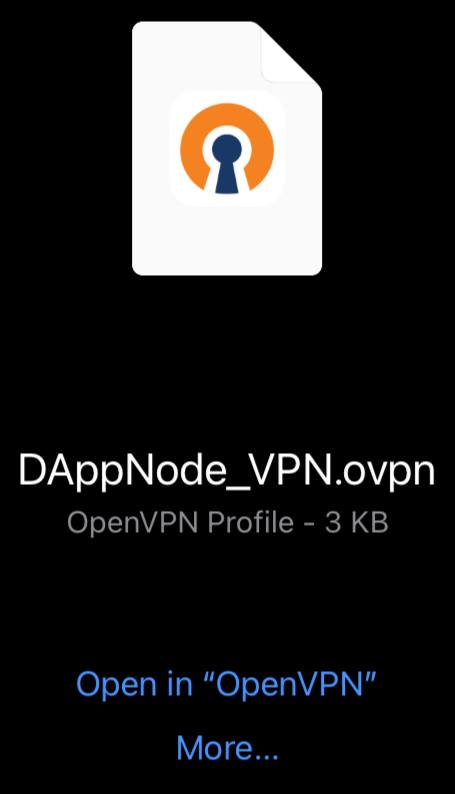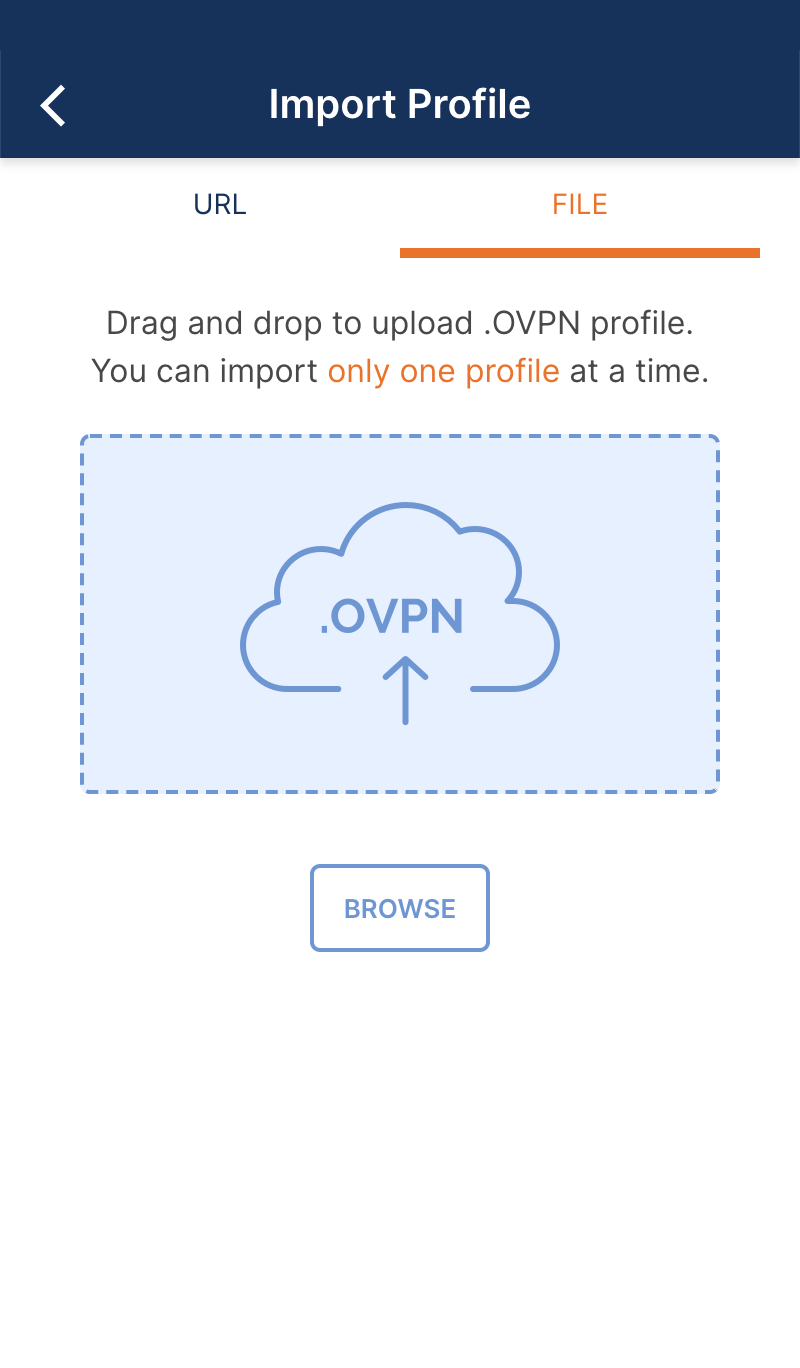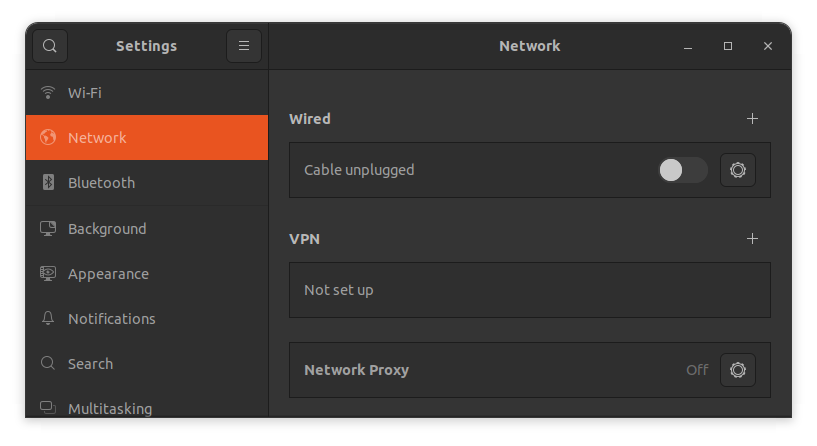OpenVPN Access to Dappnode
OpenVPN is a widely-accepted VPN protocol known for its reliability and high-security standards. Here's how you can set it up with Dappnode.
Setting Up OpenVPN
1. Get VPN Credentials URL
There are two primary methods to obtain your VPN credentials, based on your access level to the Dappmanager:
Option 1: Via Dappmanager UI
If you have access to the Dappmanager:
-
Navigate to VPN > OpenVPN.
-
If you don't see any device added to the list:
- Provide a name for your device.
- Click on 'Add New Device'.
-
To retrieve the credentials:
- Click on the 'Get Link' button.
- Copy the URL displayed.
-
For the best experience and to enable simultaneous access, it's recommended to create a separate device entry in the Dappnode VPN list for each device you intend to use for accessing your Dappnode.
While it's technically possible to use the same credentials on multiple devices, doing so can lead to connectivity issues when trying to access the Dappnode from multiple devices at the same time.
By setting up distinct credentials for each device, you ensure a smooth, uninterrupted connection for all your devices.
Option 2: Via Dappnode Terminal
If you can't access the Dappmanager, you'll need to get the credentials via the Dappnode terminal:
-
Access the Dappnode terminal, as explained here.
-
Execute the command:
dappnode_openvpn. -
A URL will be displayed on the terminal. Copy it.
2. Download OpenVPN Credentials
With the URL you obtained in the previous step, you'll now download the OpenVPN credentials:
- Open a web browser on any device.
- Paste the URL you copied into the address bar and navigate to it.
- You should be taken to a page where the OpenVPN credentials for your Dappnode can be downloaded. Click on the download button or link to download the
.ovpnfile, which contains your OpenVPN configuration and credentials.
Ensure that you store credentials securely. The .ovpn file provides direct access to your Dappnode, so treat it with the same caution you'd treat a password.
3. OpenVPN Installation
Once you've obtained your OpenVPN credentials, the next step is to install an OpenVPN client. You can download the one that's compatible with the device you are going to use to connect to the Dappnode machine from the OpenVPN website.
4. Connecting to Dappnode via OpenVPN
Once you have installed the OpenVPN client on your device, follow the steps below based on your operating system to connect to Dappnode:
Android
- Launch the OpenVPN for Android app.
- Tap on "Import file".
- Upload the
.ovpnfile you downloaded earlier. - Click on "Connect".
- Allow the app to create a VPN connection.

iPhone/iPad
- Go to the URL you obtained in the previous step.
- Download the
.ovpnfile. - Click on "Open in OpenVPN".
- Click on "Add".
- Click on "Connect"
- Allow the app to create a VPN connection.

macOS
- Launch Tunnelblick app for macOS.
- Click on "VPN Details" in the top bar menu.
- Drag and drop the
.ovpnfile you downloaded earlier in the left side bar. - Click on Connect.

Windows
- Launch the OpenVPN for Windows app.
- Click on "Import file".
- Upload the
.ovpnfile you downloaded earlier. - Allow the app to create a VPN connection.

Recent Ubuntu
- Open Settings>Network.
- Click on the "+" button to add a new VPN connection.
- Select "Import from file".
- Upload the
.ovpnfile you downloaded earlier. - Click on "Add".
- Toggle the switch button to connect.


Other Linux
- Open the terminal.
- Navigate to the directory where you have stored your
.ovpnfile. - Execute the command:
sudo openvpn Dappnode_VPN.ovpn.
Once connected, you can directly type http://my.dappnode in your browser to access the Dappmanager.